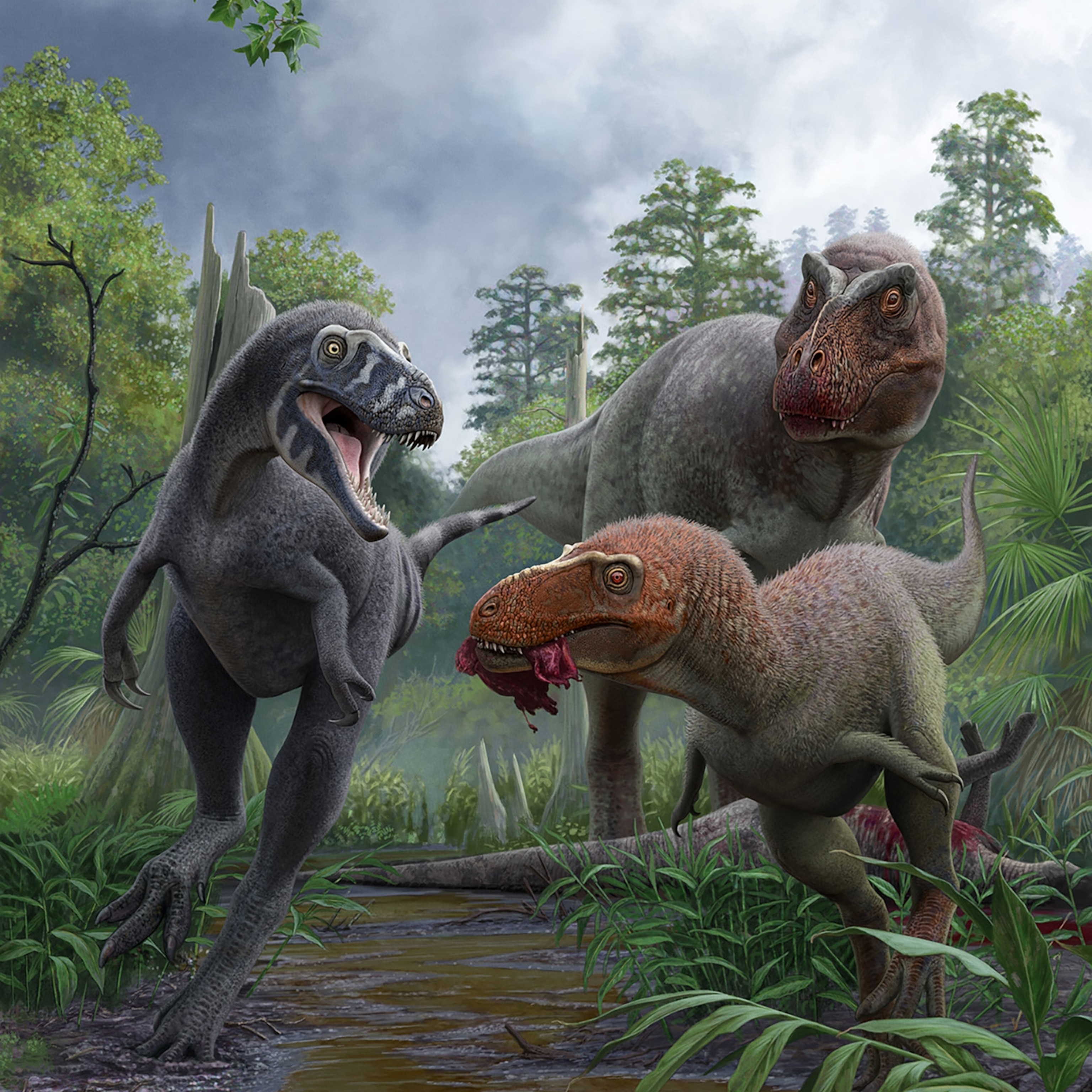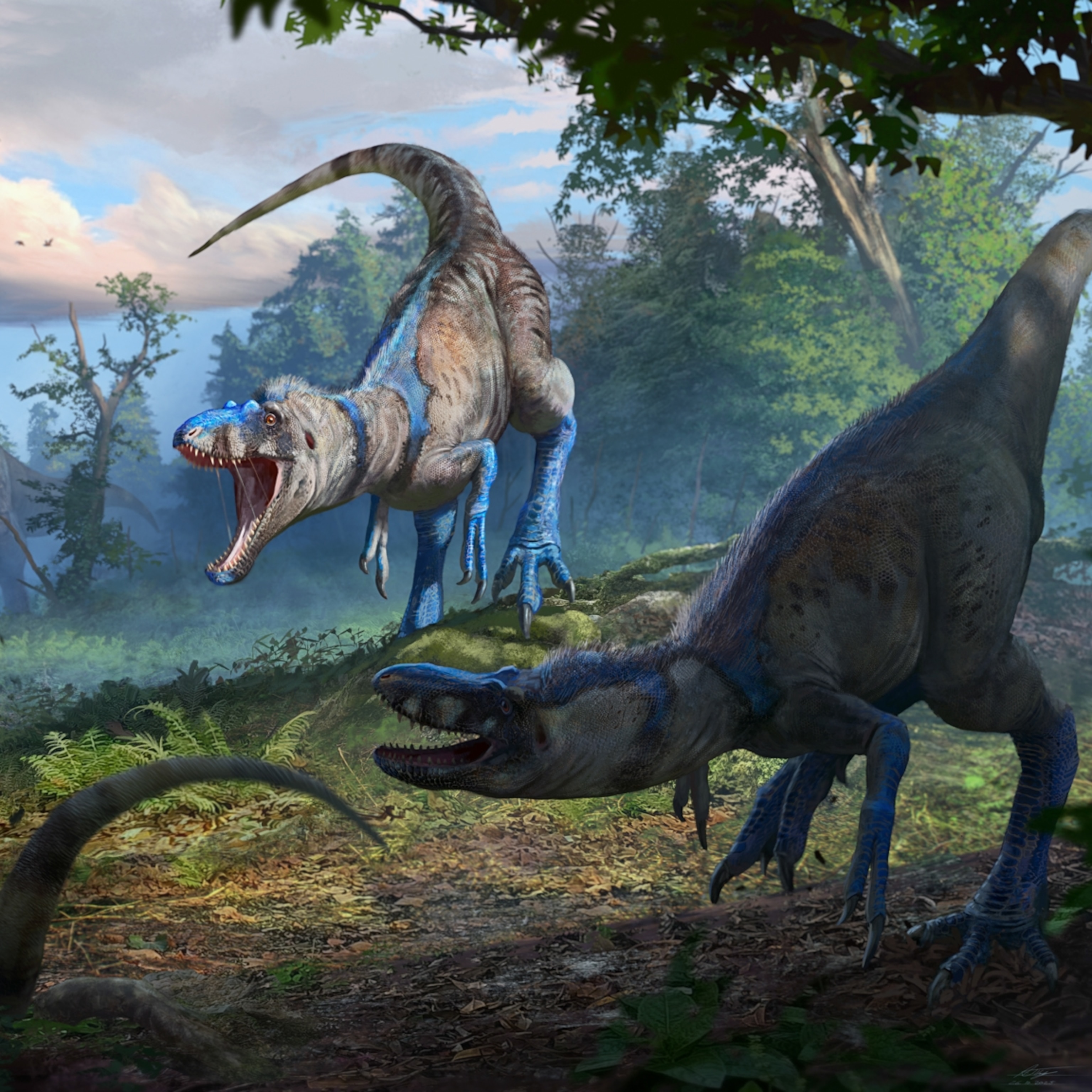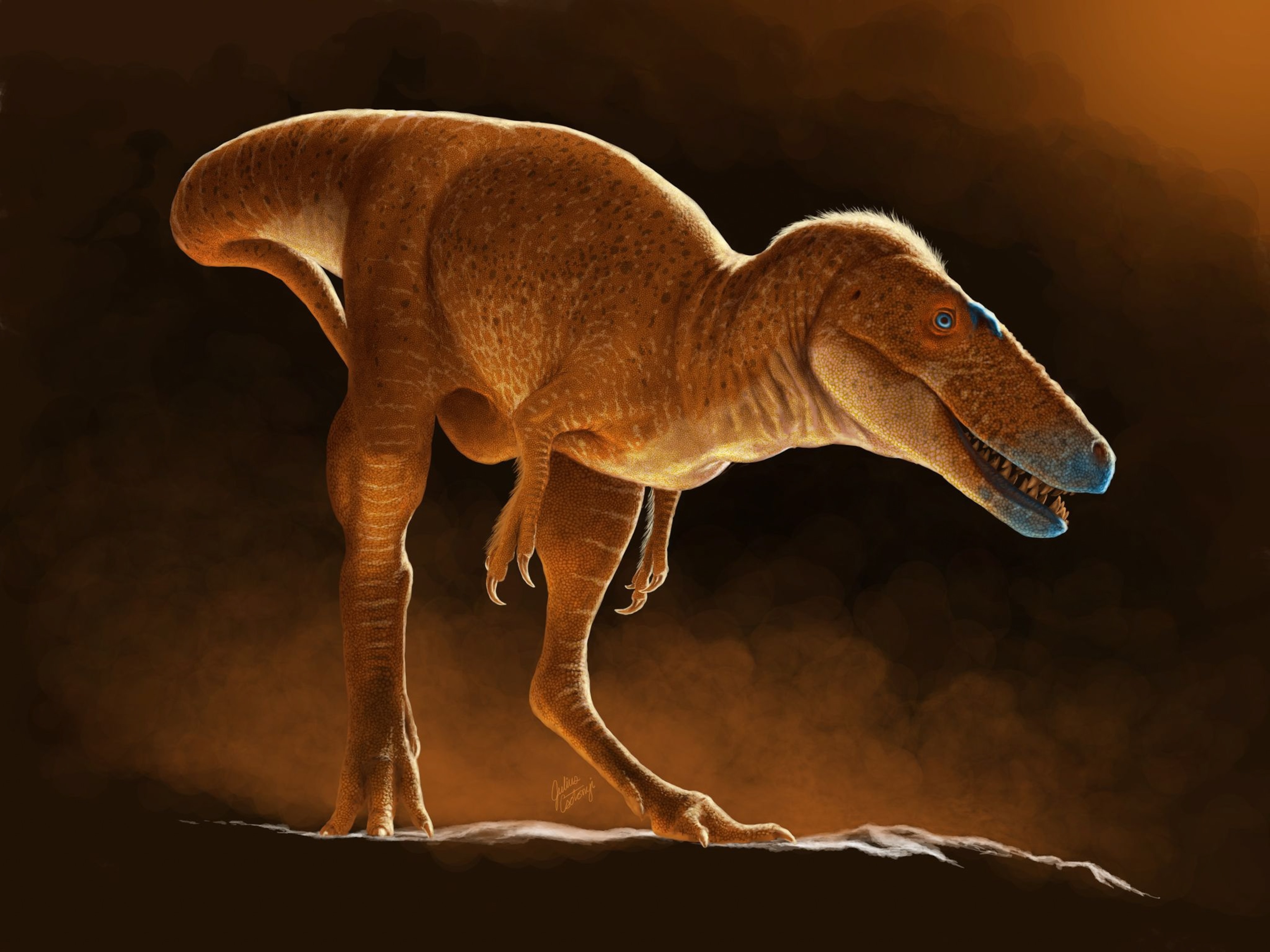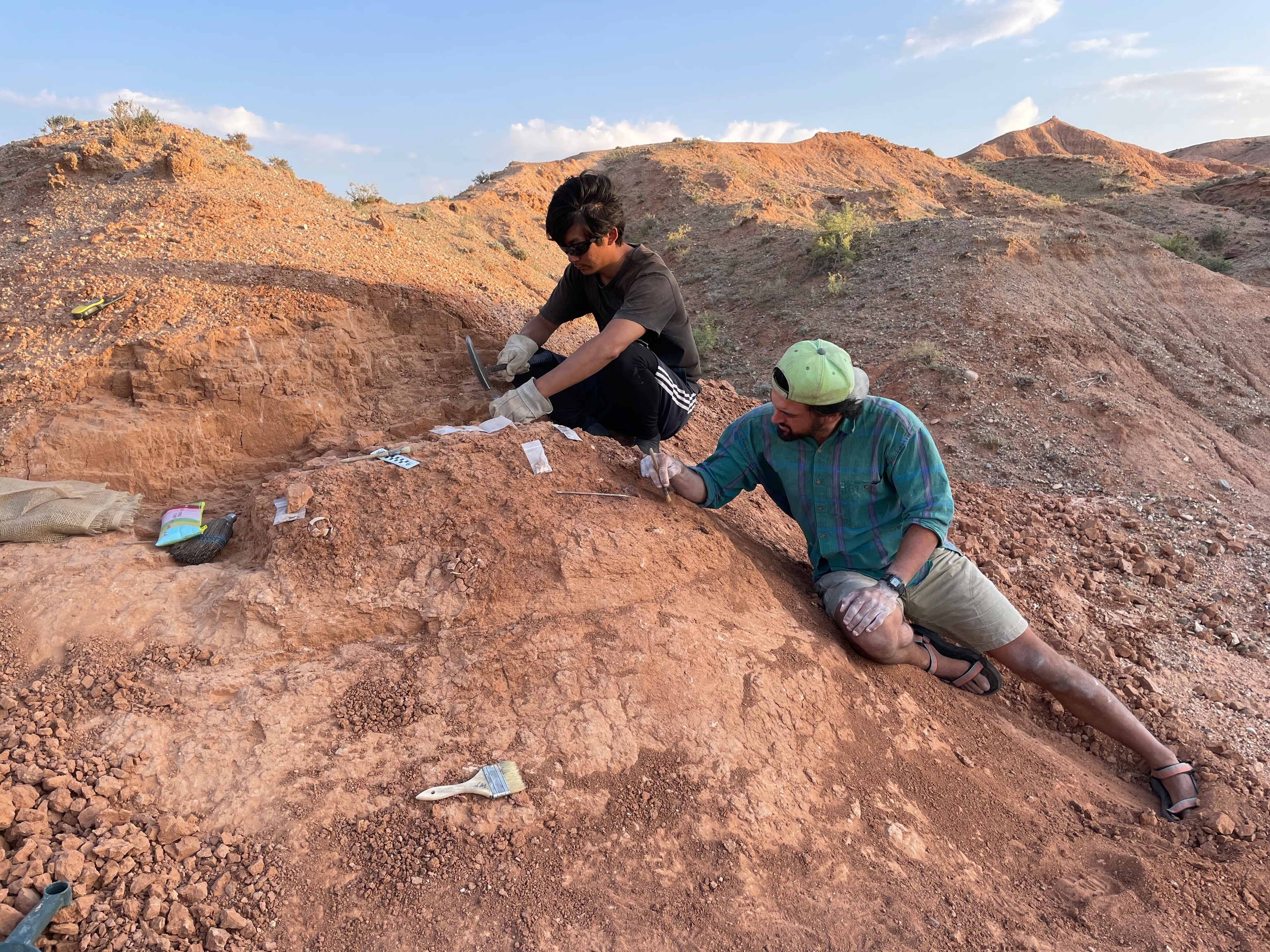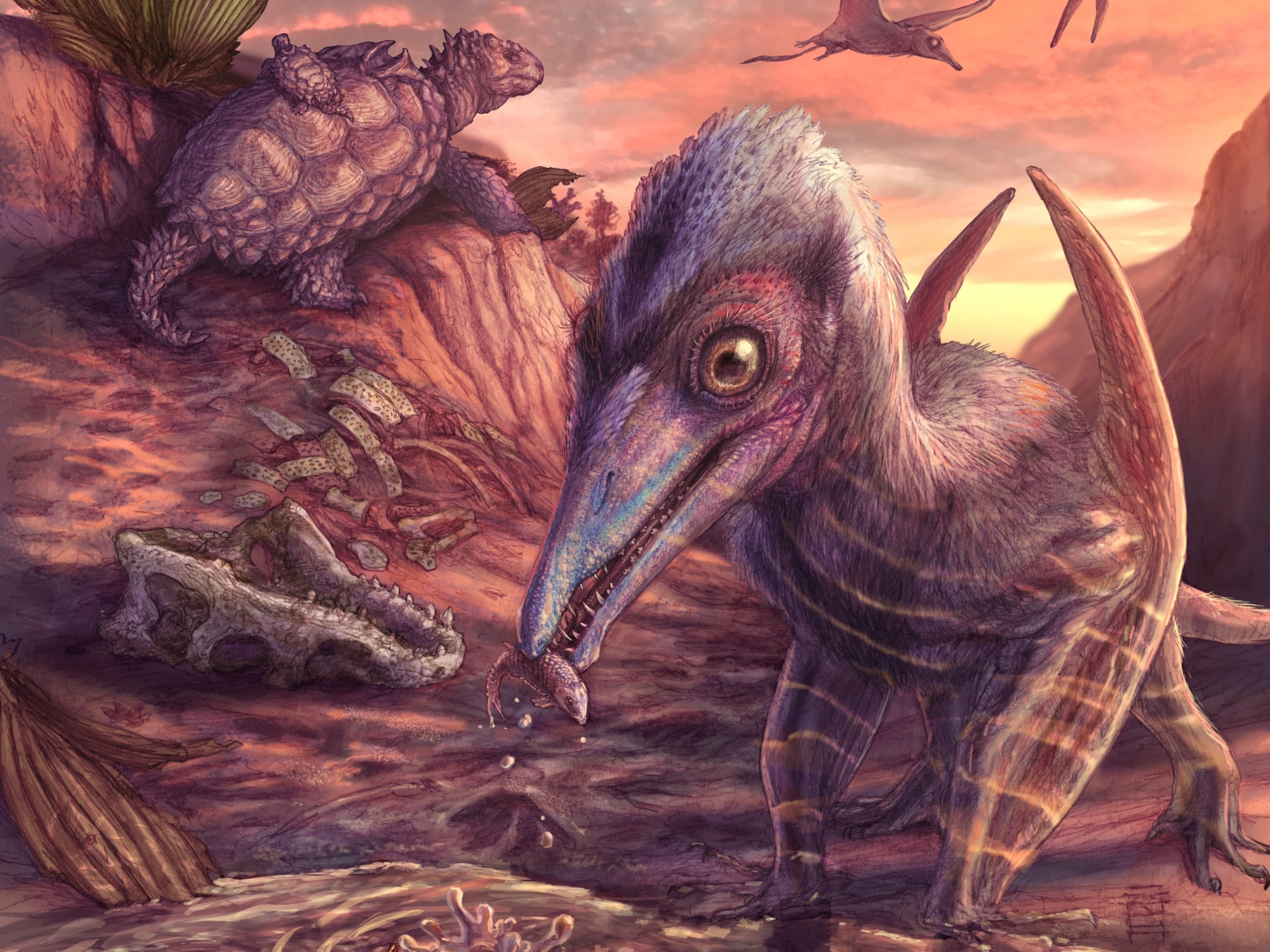If you traveled back in time 67 million years ago to ancient Montana, you’d be entering the realm of a tyrant: the iconic predator Tyrannosaurus rex. Before you venture into that lost world, though, you might want to know: On average, how close is the nearest T. rex to you?
That might sound like an impossible thing to know—but after crunching through two decades’ worth of T. rex research, a new study provides estimates of the animal’s population density. In all likelihood, a T. rex would be within 15 miles of you, if not much closer.
The new study, published last Thursday in Science, also translates these population densities into estimates for how many T. rex ever lived. On average, researchers estimate that some 20,000 T. rex lived at any one time and that about 127,000 generations of the dinosaurs lived and died. Those averages imply that a total of 2.5 billion T. rex lived in the species’ native North America, possibly as far north as Alaska and as far south as Mexico, over a two- to three-million-year timespan.
This research isn’t the first time that scientists have tried to estimate T. rex numbers. In fact, the average population density in the new paper—roughly one T. rex every 42 square miles—closely resembles an earlier estimate published in 1993. But the new study uses the latest T. rex biology research to try to set highly accurate upper and lower limits on the total population.
After running millions of computer simulations, each one with a slightly different mix of the possible values, the study found that the total T. rex count could be as low as 140 million and as high as 42 billion, with the average hovering around 2.5 billion. Likewise, anywhere from 1,300 to 328,000 T. rex could have been alive at any one time, with 20,000 being the average.
“It’s really exciting that someone’s trying to … use everything we know about T. rex to try and figure out population dynamics,” says Holly Woodward, a paleontologist at the Oklahoma State University Center for Health Sciences who wasn’t involved with the new study. “It’s interesting and fun that this hasn’t been done on this sort of scale.” (Learn more about Woodward’s research on how T. rex spent its teenage years.)
T. rex accounting
In the last 20 years, researchers have discovered an extraordinary amount about T. rex, including how long it lived (roughly 28 years), when it reached sexual maturity (roughly 15.5 years old), and how much it weighed when fully grown (roughly 15,000 pounds, on average). These data let scientists calculate T. rex’s approximate generation time—19 years, give or take—and the average body mass of T. rex at any given time.
To get to T. rex’s population numbers, researchers took advantage of a relationship between body mass and population density among living animals. On average, as body mass increases by a factor of 10, population density thins out by more than four-fifths—a pattern known as Damuth’s Law.
Damuth, an ecologist at the University of California, Santa Barbara, first discovered this pattern by compiling 30 years’ worth of ecological data on living mammals. However, Damuth’s Law isn’t ironclad, since animals vary widely in their specific lifestyles and habitats. For example, spotted hyenas and jaguars have similar body masses, and both are predators, but the hyenas’ population density is some 50 times higher.
When applied to T. rex (after correcting for the fact that T. rex isn’t mammalian), Damuth’s Law implied that the dinosaur’s true total likely fell within 140 million and 42 billion individual dinosaurs.
“In paleontology, it’s very hard to estimate things … so what I’ve started to do is think less about estimating something and more about bracketing it. Can I put a robust upper and lower bound on it?” says lead study author Charles Marshall, a paleontologist at the University of California, Berkeley.
From life to rock
Aside from getting a better sense of how many of these elephant-sized predators were stomping around, Marshall and his team were able to crunch the numbers to better estimate how often fossils form. Could the odds of a T. rex fossilizing be quantified, in the same way that we can calculate the odds of getting struck by lightning?
There are a hundred or so known specimens of T. rex, but roughly two-fifths of them are in private or commercial hands and can’t be reliably studied. So to set a minimum fossil total for the study’s purposes, Marshall’s team limited its count to 32 fossils of post-juvenile T. rex that are held in public institutions.
If all the T. rex that ever lived—the estimated 2.5 billion—yielded just those 32 fossils, then only about one in 80 million T. rex fossilized after they died. Even if a higher percentage of the animals fossilized and we have yet to find the remains, the sheer tininess of these odds underscores just how rare it is for a carcass to be buried quickly enough and in the right chemical conditions to mineralize and form a fossil. “If T. rex were a thousand times less abundant—if the total wasn’t 2.5 billion but was 2.5 million—we might never have found it,” Marshall says.
The method Marshall’s team has outlined could be used for other extinct creatures, as well. Among dinosaurs, researchers say one of the best candidates is the Cretaceous herbivore Maiasaura, which is known from hundreds of specimens, from newborns to adults.
For Woodward, one of the study’s most exciting implications is just how rare dinosaur fossils really are. If these rates hold for species other than T. rex, researchers may even be able to estimate how many dinosaur species simply didn’t fossilize at all—and are now irrevocably lost to time. “Being able to figure out how much we’re missing can be just as important as knowing how much we have,” she says.


